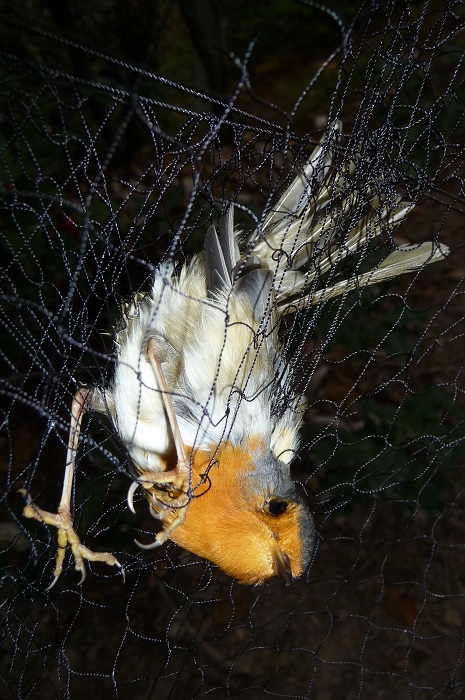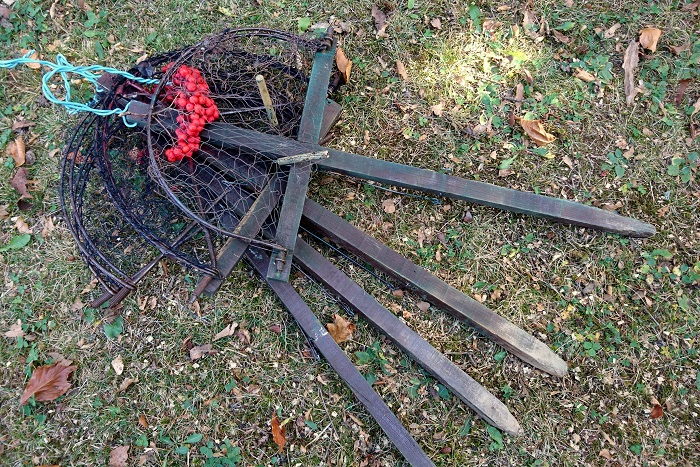Bird trapping nets in Italy
Nets are widely used in Italy to catch birds. There are different types of nets used in different regions for very different purposes.
Mist nets

In northern Italy, mist nets are usually well hidden in forests and bushes. The poachers either catch thrushes, which they in-turn use as live decoys for hunting (or sell to hunters for the same purpose), or the birds are killed and eaten. All manner of passing birds get indiscriminately entangled in set nets - from dunnocks and wrens to sparrowhawks and the intended thrushes and robins, everything that is native to the mountain-forests of northern Italy can be found caught in them.
In southern Italy they are usually used to catch finches such as goldfinches and linnets, which are kept or sold as house birds. In Sardinia, poachers catch thrushes with mist nets to illegally sell them on to restaurants.
Clap nets
Finches for the pet trade are mainly caught with hammer nets in Sicily and Campania. They consist of two nets lying horizontally on the ground and held in tension by springs. Between the two nets there is an open area where food or water is often spread or on which attract birds stand. A bird catcher hidden not far from the catching point triggers the nets manually when birds gather on the open area. The net then breaks over the animals.
Spring nets

Everywhere in Italy, bird trappers use small trapping nets that work in a similar way as snap traps, but unlike the metal wires these are netted and catch birds alive. These net traps are mostly found positioned in woody plants and are used to catch individual thrushes or finches. They are either used as live decoys or end up in the home of a supposed "bird lover".
Traps of this type are often found near camouflage hunting huts. Some hunters find captive bred decoys too expensive - so they simply take them from the wild!
At our bird protection camps in Italy we collect hundreds of nets each year and help the police to convict the poachers.
In some areas, the number of nets found is slowly decreasing, but they remain a major problem in Italy due to their effectiveness and the profit margins in the pet trade.






